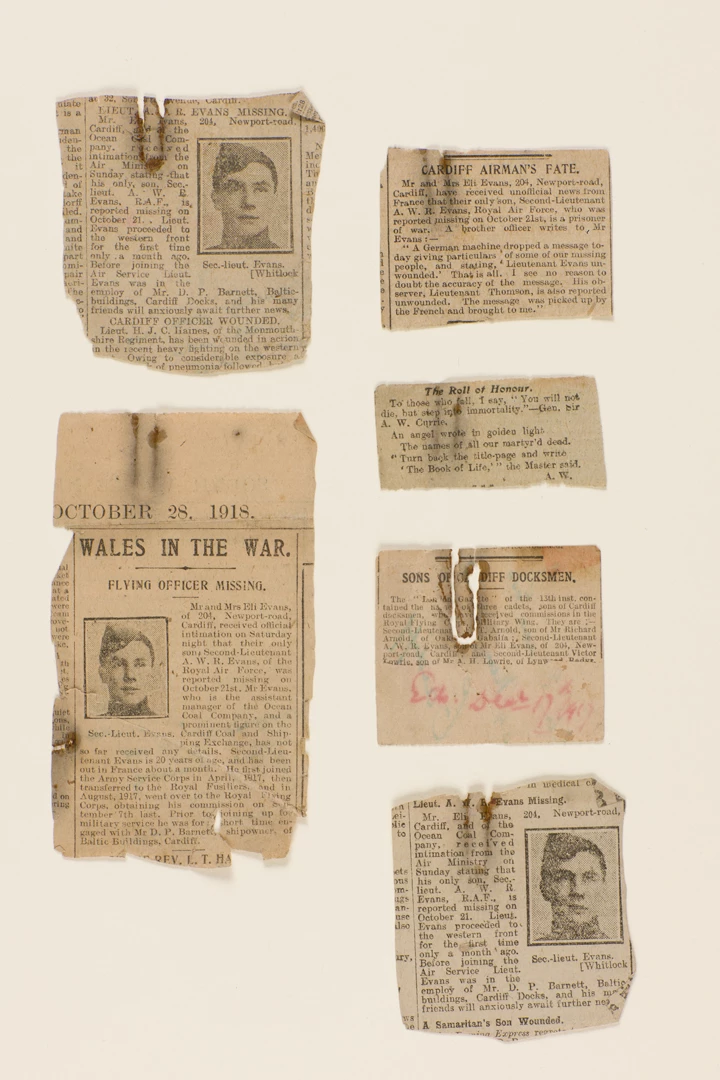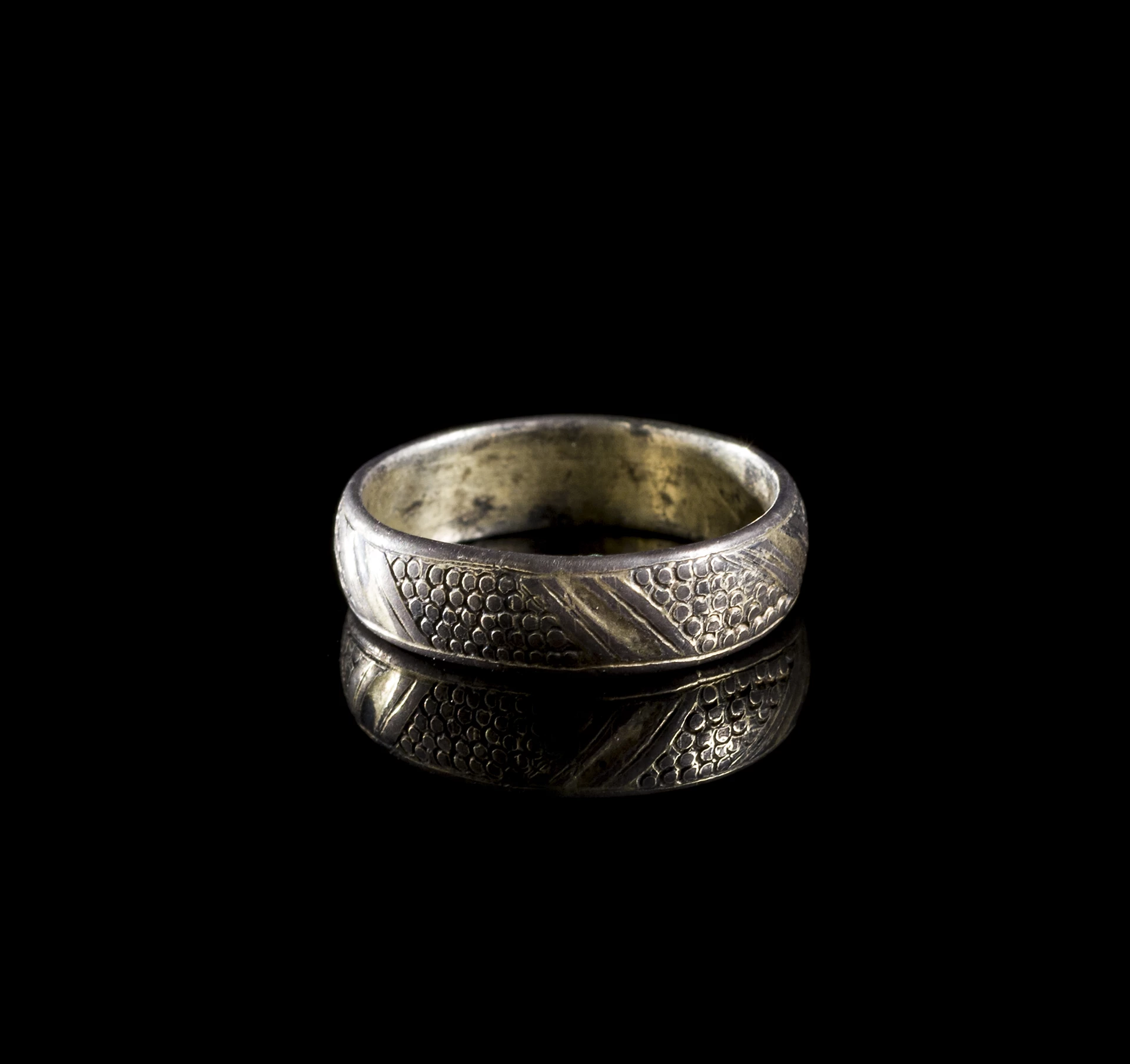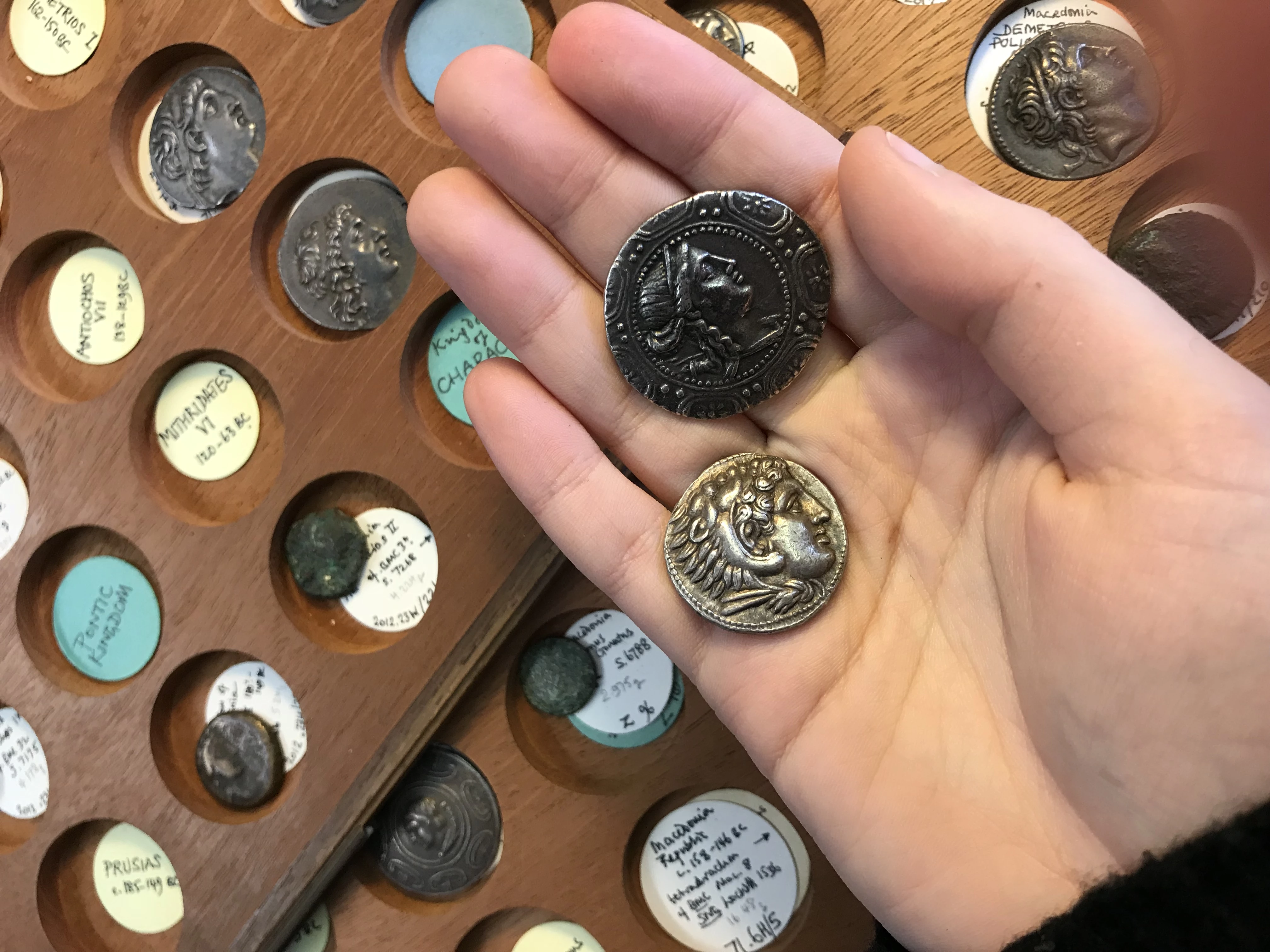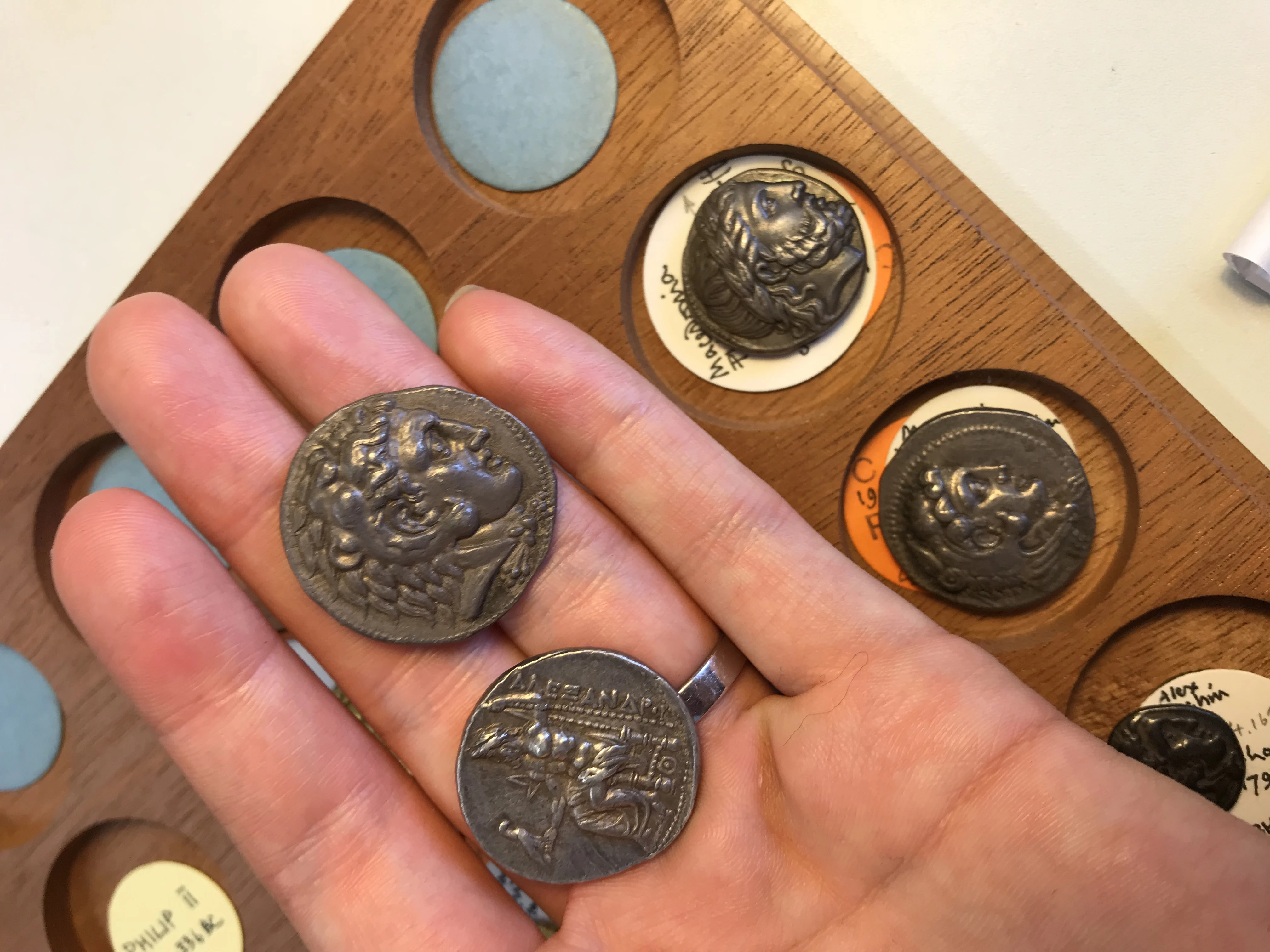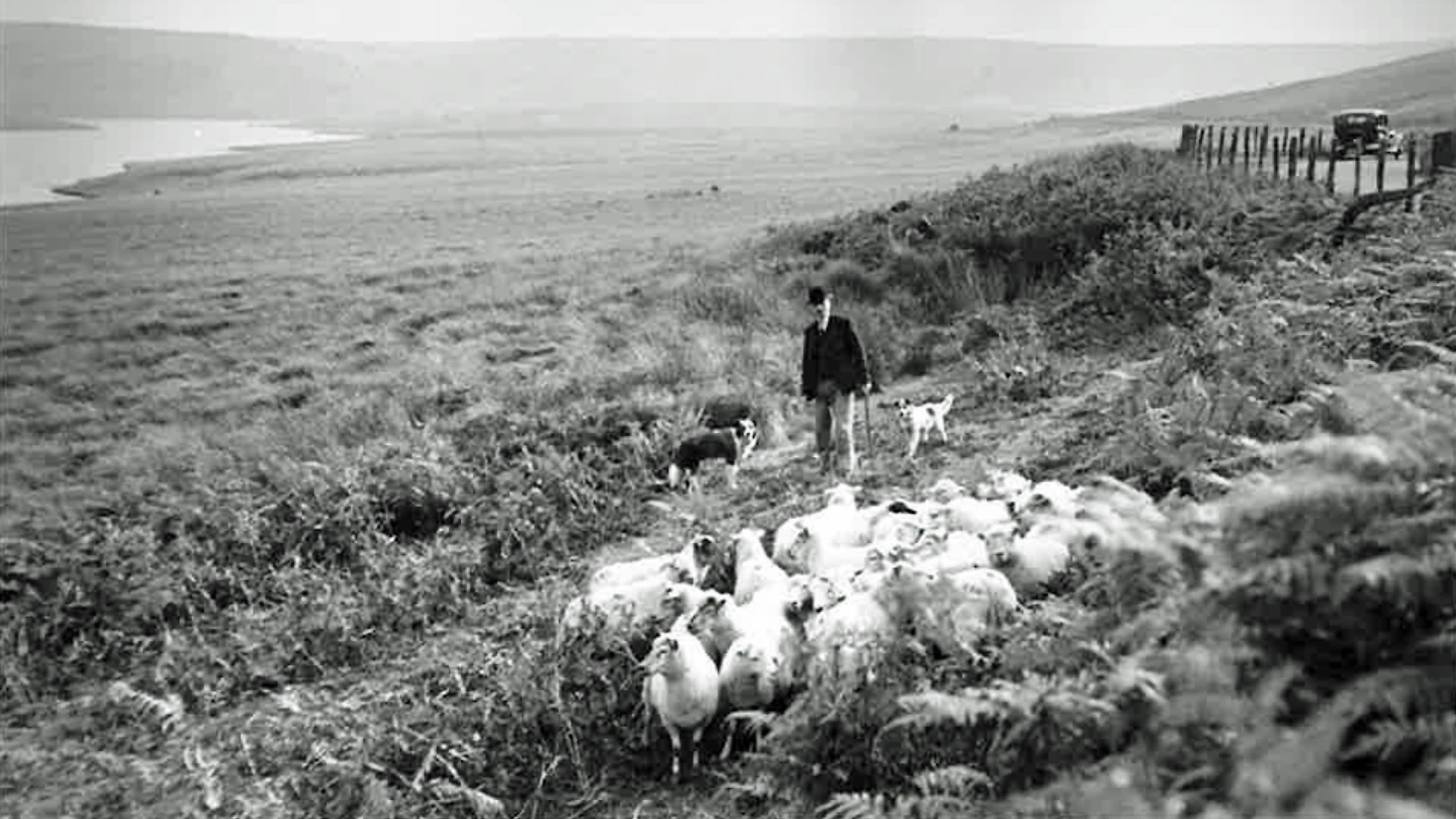Ar goll: Stori Wellesley
, 28 Mawrth 2018
Ebrill 1 2018 yw canmlwyddiant ffurfio’r Awyrlu Brenhinol, ac i gyd-fynd â hyn hoffwn rannu stori ryfeddol o’r casgliadau. Yma yn Sain Ffagan, mae gennym gasgliad o lythyrau a thelegramau a anfonwyd i ac oddi wrth Eli Evans o Gaerdydd. Maent yn ymwneud â phrofiadau mab Eli, Arthur Wellesley Rees Evans, yn y rhyfel. O’r ohebiaeth hon, rwyf wedi gallu olrhain yr hanes.
Ganwyd Arthur Wellesley Rees Evans ar 18 Mehefin 1898 yn Llaneirwg, Caerdydd. Roedd yn byw gyda’i rieni – Eli a Laura Evans – ar 204 Heol Casnewydd, Caerdydd ac yn gweithio i Mr D. P. Barnett, perchennog llongau, yn Baltic Buildings yn y dociau.
Ym mis Rhagfyr 1916 derbyniwyd Wellesley ar Gwrs Hyfforddi Swyddogion, ond fe’i gwrthodwyd yn Whitehall oherwydd twbercwlosis ar ei ysgyfaint. Yn y pendraw, cafodd ei dderbyn i’r Fyddin Brydeinig a chafodd ei ddatgan yn ffit i ymuno â’r Corfflu Awyr Brenhinol ar 22 Awst 1917. Flwyddyn yn ddiweddarach cafodd ei yrru i Gaer-wynt at Adran Cadetiaid rhif 2, cyn cael ei drosglwyddo i Sgwadron Hyfforddi rhif 25 yn Thetford, Norfolk.
Ar 9 Ionawr 1918, dechreuodd Wellesley ar ei hyfforddiant hedfan ac ymladd yng Nghanolfan Hyfforddiant Old Sarum, yr Amwythig, a graddiodd gyda 103ydd Sgwadron yr Awyrlu Brenhinol ar 5 Ebrill 1918, bedwar diwrnod wedi ffurfio’r RAF. Aeth yn ei flaen i Ysgol Llywio Awyr a Gollwng Bomiau rhif 1 yng Nghôr y Cewri, cyn gadael am Lundain ar 24 Medi ar ei ffordd i Ffrainc.
Cyrhaeddodd Wellesley ym Mharis ar 28 Medi 1918, ac oddi yno cafodd ei symud i ‘rywle yn Ffrainc’ i ymuno â 110fed Sgwadron yr RAF ar 15 Hydref. Cymerodd ran yn ei ymgyrch gyntaf chwe diwrnod yn ddiweddarach, ar 21 Hydref. Hedfanodd y sgwadron i fomio Cwlen (Köln), ond ni ddychwelodd Wellesley. Roedd ef a’i wyliwr, Is-gapten Thompson, wedi’u saethu i lawr.
Derbyniodd Eli a Laura Evans wybodaeth swyddogol gan y Weinyddiaeth Awyr fod eu mab ar goll ar 21 Hydref. Anfonodd Eli lythyrau a thelegramau i’r Weinyddiaeth ac i’r Asiantaeth Garcharorion Rhyngwladol yn Genefa yn gofyn am fwy o wybodaeth. Rhyddhad mawr oedd darganfod fod Wellesley yn fyw ac yn iach, ond yn garcharor rhyfel yn Limburg, yr Almaen.
Yn ffodus i Wellesley, byr fu ei gyfnod fel carcharor. Daeth y rhyfel i ben yn dilyn cadoediad 11 Tachwedd, lai na mis wedi iddo gael ei ddal. Ar 3 Rhagfyr, gadawodd yr Almaen gan fynd adref trwy Swistir a Ffrainc ac i Dover ar 10 Rhagfyr. Ar 7 Chwefror 1919, cafodd ei ryddhau o’r fyddin ac wythnos yn ddiweddarach roedd yn ôl yn nociau Caerdydd gyda D. P. Barnett. Ychydig fisoedd wedi i’w fab ddychwelyd adref, bu farw Eli Evans yn 52 oed. Mae’n bur debyg fod straen a phryder y cyfnod hwn wedi dweud arno.
Wedi’r rhyfel arhosodd Wellesley yng Nghaerdydd fel Swyddog Marchnata i’r Bwrdd Glo Cenedlaethol. Priododd â Gladys Gwendolyn Mitchell a chawsant ferch. Bu farw Arthur Wellesley Rees Evans ar 5 Ionawr 1965 yn 66 mlwydd oed, yng Nghyncoed, Caerdydd. Mae wedi’i gladdu gyda’i wraig yn Eglwys Blwyf Llaneirwg.
Cefnogir gan Gynllun Cyfamod y Lluoedd Arfog
